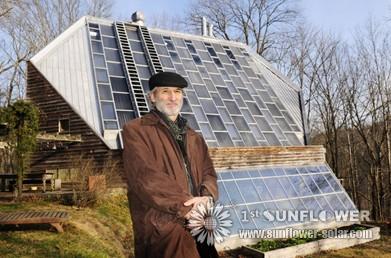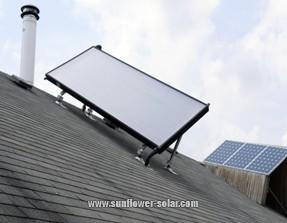I heard from readers as I of the pioneering solar-home, that Lexington architects Richard Levine to built and equipped with new technology recently wrote himself in the 1970s.

I heard from readers as I of the pioneering solar-home, that Lexington architects Richard Levine to built and equipped with new technology recently wrote himself in the 1970s.
I heard by more readers than I have new Warren County generate "net zero" school, designed as much electricity, as it used wrote.
Many readers wanted to know: how could they use to help solar energy and innovative design on the planet and to reduce their electricity bill?
As solar technology is getting better and better and cheaper, there is always a viable alternative for more Kentucky homeowner, Andy McDonald, said Director of Kentucky solar partnership, a charity in Frankfurt. The options range from solar-powered water heaters and out to super-insulated "passive" houses.
Because Kentucky is not sunny year-around, McDonald said: "many people believe that solar power is not viable here, but this is not true." "Germany is the world Kentucky leader in the field of solar energy, and has a better solar resources as Germany."
The difference, McDonald said, is Government policy and incentives. The United States lags in many countries measures to promote renewable energy, and Kentucky is lagging incentives in many States. But help is out there.
Since 2004 Kentucky House and apartment owners able to have solar generators in their local multi-purpose hook, receiving credit for the power, feeding them into the network, power, that they move at night and on cloudy days balance. It is possible for home and apartment owners to break even - and even a profit are, if their use the power comes from the Tennessee Valley Authority.
The Federal Government has since 2005 tax incentives for the installation of solar and other renewable energy sources offered. The State provides some incentives, and the Mountain Association for community economic development has installed flexible loans for some systems in Eastern Kentucky.
The most popular systems are solar water heaters, which had installed Dave home like a ray in his Madison County two years ago. The boiler is that battery operated cargo by two small solar system on his roof. When the Sun is not shining, the boiler on the regular stream can be run.
Solar water heaters in Kentucky create typically about 70 per cent of a house the hot water over the course of a year.
Kollar, said the system cost him over $5,000, after incentives. With what he is so far save, he estimates, it will pay period of 12 years. "For me is but, that is only part of the equation," said Kollar, Chief Engineer for Fox 56 television.
"I don't know that we're saving the planet, but fossil fuel is a finite resource and it seems silly to waste it," said Kollar, who also supplements his home's furnace with a wood stove. "Besides, I didn't want to go through another ice storm without hot water and heat."
waste it," said Kollar, who also supplements his home's furnace with a wood stove. "Besides, I didn't want to go through another ice storm without hot water and heat."
For home and homeowners, more than heat water to do that, is there a key to understand what: success is not so much about how much energy can produce your solar system, it comes to how energy efficient your home you can make, so it so little used power any kind as possible.
The first step to lower electricity bills will be weatherizing an existing home or designing a new home to minimize energy loss and the benefits of natural sunlight.
Basic design principles include a home to the long axis aligned to the South, with Windows that allow sunshine in winter, but are shaded from summer heat. Also minimize Windows on a House of the North and the West side, which gets a lot of summer sun, winter catches winds, McDonald said.
While Kentucky may be behind other States in the solar incentives, it is before the most when it comes to green building design. Levine, a "pioneer" award from the American solar energy society, operates a practice, the architecture was in the last year, the European "passive" home design to Kentucky.
So-called passive houses are so isolated that little energy is lost. Use only about 10 percent of the needed energy to heating and cooling a well-established conventional House. Because these homes are so airtight, they provided heating and cooling with special ventilators bring fresh air from the outside with minimal loss.
Levines company CSC Design Studio, designs to people with middle income thought five passive "net zero" homes for Kentucky Highlands Investment Corp. for the sale. The first is under construction of close to Williamsburg, Virginia.
CSC recently also a net zero home for a customer, the building in July along the Kentucky River begins designed, so Michael Hughes, an architect who works with Levine. Performance will be needed for this passive houses from solar panels on the roof.
Passive houses can cost as much as 25 percent to rely more than conventional homes, but Hughes will thinks prices will fall, learn as more builders, how to build them and domestic companies in step, to compete with European manufacturers of super-insulated doors and Windows. "I think it is the future of building," said Hughes.
waste it," said Kollar, who also supplements his home's furnace with a wood stove. "Besides, I didn't want to go through another ice storm without hot water and heat."